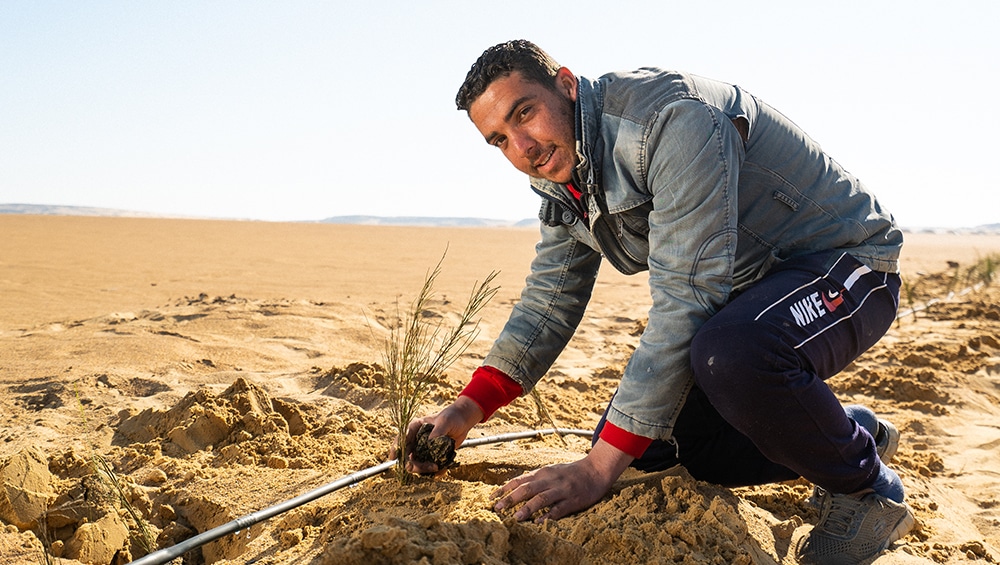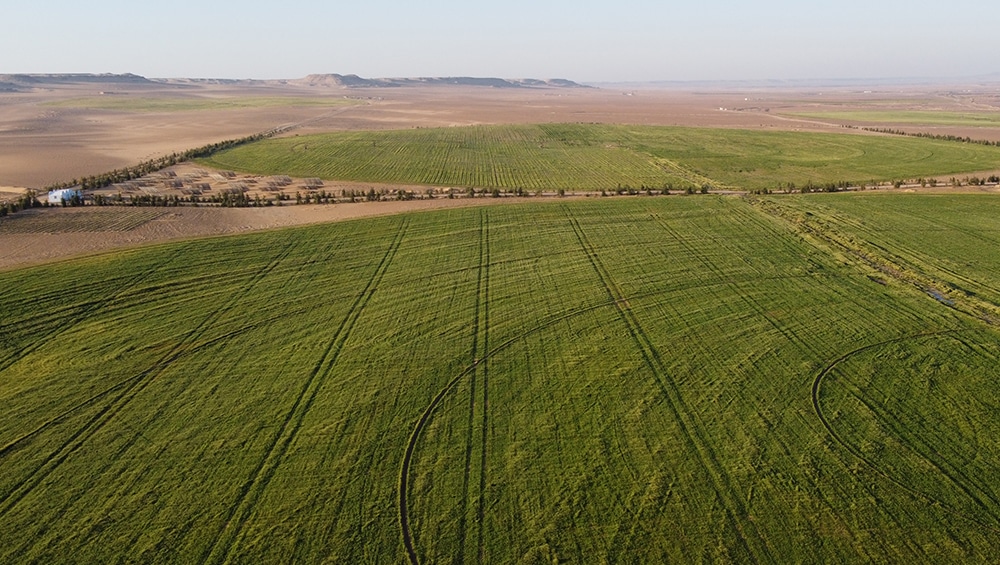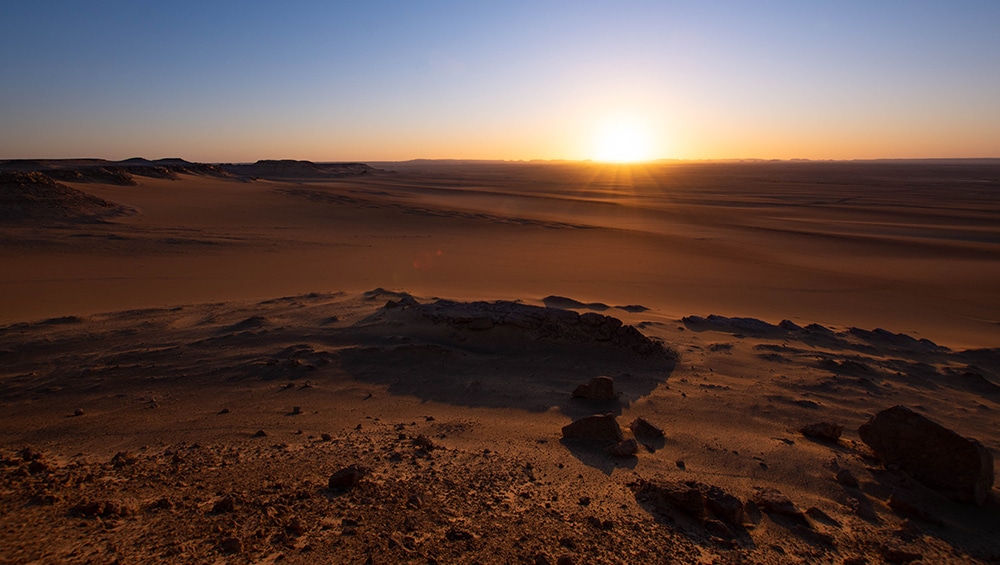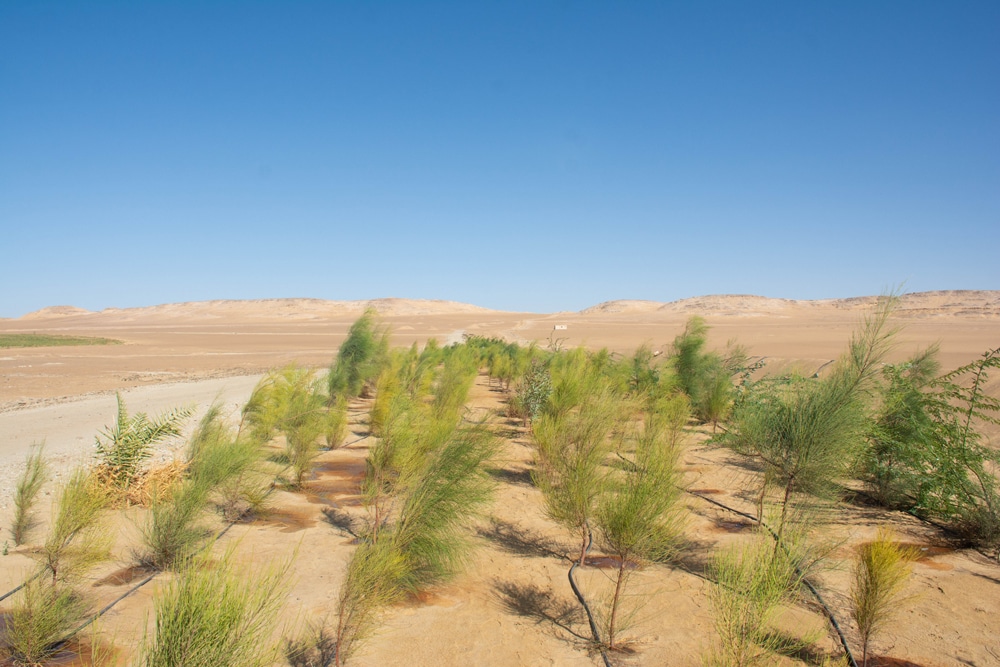Greening the Desert is not an empty advertising slogan in SEKEM-Wahat, located over 350 km southwest of Cairo, but a daily lived reality. The local community works in the scorching heat and freezing cold of Egypt’s Western Desert to make it greener piece by piece and thus save our climate step by step.
Why is a forest in the desert important?
- Trees compensate for CO2.
- Trees protect fields from wind and pesticide drift.
- Trees significantly support organic farming.
- Trees promote biodiversity.
- Trees provide shade.
Did you know that a person for example in Germany produces about 30 kg of CO2 per day? That’s about 11 tons per year! Under ideal conditions, a tree in the Egyptian desert compensates for 30 kg of CO2 per year – that’s much more than an average tree in Germany. The reasons for this include the different climate and the fact that the trees are planted in such a way that they have exactly the right spacing for the best growth.
A person living in Germany would therefore have to plant one tree per day in SEKEM-Wahat to compensate for their annual CO2 consumption. Planting a casuarina seedling and maintaining it for the first year costs 2€. The further maintenance costs 1,50€ annually.

We have set ourselves the following goal:
We want to plant 15,000 trees together and thus a forest in the desert.
Sounds doable, what do you think?
Together we will plant a forest in the desert – join us! NOW!

Growth in every sense
Reclamation of desert land helps to combat the effects of climate change by recultivating the inhospitable land through biodynamic agriculture. However, Wahat is not just about greening the desert – it is building a community where people work, live and develop together. SEKEM believes that art- and culture-related activities contribute to human development and the unfolding of individual potential.



